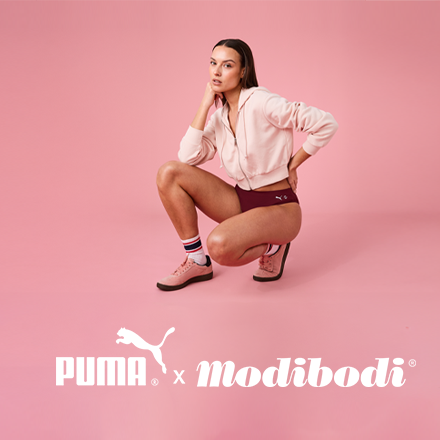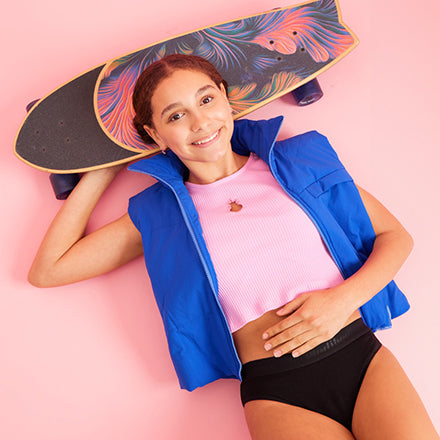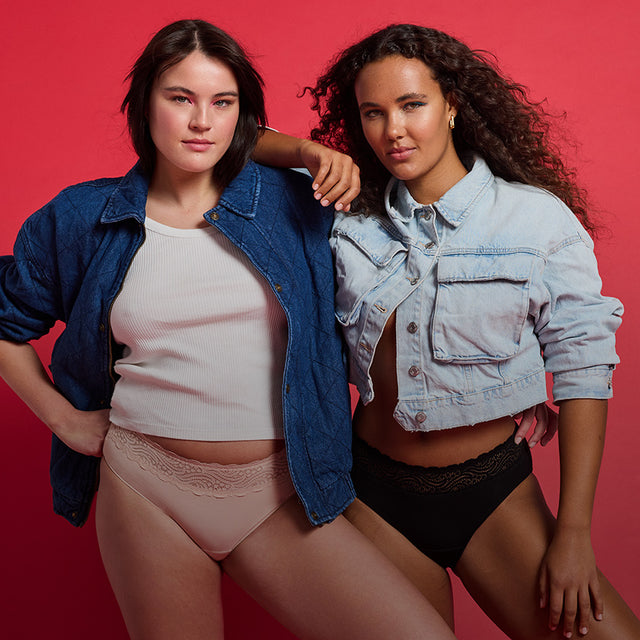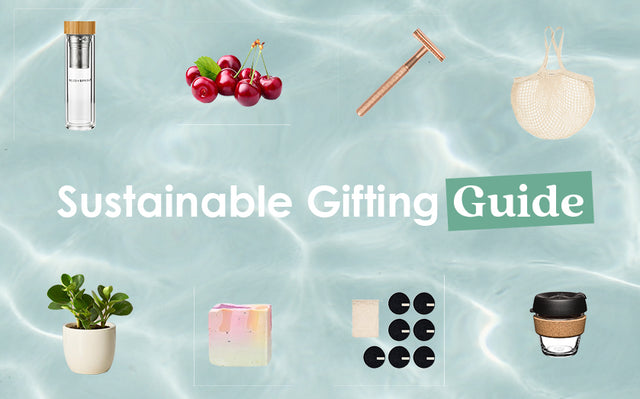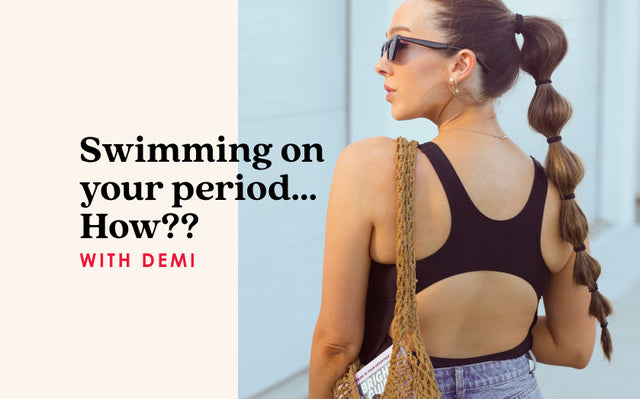Keisha Leon is a contemporary designer, proud Waanyi, Kalkadoon and Chinese woman, and a business owner who creates unique designs which connect to her own journey navigating her cultural identity and personal experiences.
When Keisha connected with Modibodi to discuss creating a Limited Edition print we felt an immediate synergy because of her entrepreneurial nature, her desire to speak out and break taboos around social issues, women’s health and period poverty, and of course her enormous creative talent.
Tell us about Leon Design
I started Leon Design because I wanted to go out on my own and use my graphic design skills in social spaces, as well as my identity as an indigenous designer.
Can you share the story behind the designs you’ve created for Modibodi?
When I was creating these initially they were reflective of how I was feeling at the time and my thoughts about the social barriers around women’s health, as well as period poverty.
It was also reflective of my own journey at a time when I was trying to get pregnant and learning to better understand my own menstrual cycle.
It’s about my journey, about being a woman, about getting in touch with my cycle and the way the mind, body and spirit change as you’re on your own journey.
I want to challenge the norms, structures and barriers to ownership of our bodies, to take that ownership back, to have a loud voice and use positive energy to change the world.
STRENGTH
This design is about speaking out to create change and providing a platform to give strength to the voices of women who have been marginalised, underestimated, under-valued or silenced.
JOURNEY
The three colours in this design represent each individual’s unique connection to body, mind and spirit, and how these connections are different for everybody, and constantly evolving.
What’s the biggest challenge in running your own company?
When running your own company you open yourself up in a different way. You have to understand where your values sit, how you want to run your business, and the ‘why?’ you’re doing it is also really important to me. It’s so important to have a purpose, to come into an industry and to leave it better than you found it.
I really hope to have an impact in the design industry by coming in and advocating for social change, and doing so in a way that doesn’t play into the problems in the industry or perpetuate the things we’ve been hearing over and over again.
My perspective is that I want to make sure those values are carried through to my business. Ultimately, I think opening yourself up and being vulnerable and allowing yourself to take risks is what I’ve found the hardest part of running my own business.
It’s easy to hide behind things and not take risks and play it safe, but I want to approach my business in a way where I’m not afraid to take risks and really put myself out there.

Why do you think Modibodi and Leon Design are a good fit?
I believe both Modibodi and Leon Design align because we’re both interested in women’s health, and we’re both businesses run by women who are exploring social issues and looking for ways to have an impact. I’ve always felt connected to what Modibodi stands for and have always worn the product because I think it’s so important to talk about women’s health, to open up taboo topics and to create conversations and have a positive narrative about our health and our bodies.
What advice would you have for up-and-coming designers?
My advice is to really sell your story and to understand your ‘why’, to know why you’re doing this and what kind of impact you want to have. That’s how I approach my business, and it’s how change can really happen.
I’d advise having a firm idea of what you want to do rather than falling into the trap of being a ‘jack of all trades’. Trailblaze your own way, take risks and be vulnerable in your own journey, that way you’ll be setting up success for the next person coming through.
Can you tell us about your background as Waanyi, Kalkadoo and Chinese woman?
My background is as a Waanyi, Kalkadoo and Chinese woman, and my mother is Caucasian. I grew up in Mt Isa in Kalkadoo country, which was a wonderful experience, before moving away.
My cultural identity has played an integral role in my upbringing, my journey, how I create designs and prints and how that connects with people. I go back home to continue that connection, to ground myself and as an important way part of my design process.
How does design help communicate complex issues or provide a voice for different groups of people?
As the visual language for society, I believe design and creative industries pay an integral role in driving change and progress. Visual communication helps break down barriers, to inform people and to bring them close together. At the same time, creative industries can also play a role in not doing enough, or in perpetuating problems, so I feel it’s really important for creatives to have a platform to tell their own story and to write new narratives and bring people together.
It’s important for creatives to both have their own platform to tell their personal story, as well as to hear different voices in the industry and tell the narratives of other in order to hopefully better connect people to the world around them.
Congratulations on your pregnancy. What values do you want to instil in your child?
For me, the most pure values to instil are empathy, compassion and kindness. I want my child to know they can make a difference as an individual, to have individual agency, and to know that they’re just loved.


